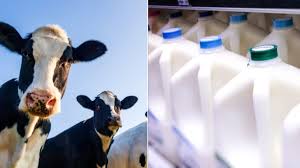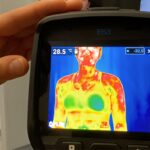As the H5N1 avian flu virus continues to spread among poultry and dairy cattle, concerns about the safety of the U.S. milk supply have arisen. In late November 2024, California state regulators recalled two batches of raw, unpasteurized milk from a Fresno dairy farm after the avian flu virus was detected. Following the discovery, the dairy farm issued a full recall of its raw milk, cream, kefir, butter, and cheese products, and the farm was placed under quarantine, halting any further distribution of milk products produced after November 27.
While no human cases of bird flu linked to the affected milk have been reported, health officials have strongly advised consumers not to drink the recalled raw milk and to return it to the stores. This incident has once again highlighted the ongoing debate around raw milk consumption and the importance of pasteurization in ensuring public health safety.
Despite warnings from health experts about the potential dangers of raw milk, including the presence of avian flu and other harmful pathogens, raw milk sales in the U.S. have been on the rise. High-profile figures such as Robert F. Kennedy Jr. have controversially claimed that raw milk is beneficial to human health, contrary to scientific advice from the FDA and food safety experts.
The Risks of Raw Milk
Dairy products, like other foods, carry inherent risks. Milk comes from animals that live in environments where contamination by harmful bacteria and viruses is common. Cows graze outdoors, lie in mud, and come into contact with manure, all of which can introduce dangerous pathogens into the milk. Common pathogens associated with raw milk include Listeria monocytogenes, which can cause serious infections like listeriosis; E. coli, which can lead to severe gastrointestinal illnesses and kidney damage; and Salmonella and Campylobacter, which can cause diarrhea, abdominal pain, and other symptoms.
Pasteurization: A Lifesaver for Milk Safety
The concept of pasteurization, pioneered by French microbiologist Louis Pasteur in the 1860s, has been a critical factor in preventing milkborne illnesses. Pasteur discovered that heating wine and beer could kill harmful microorganisms that caused spoilage. This process, which heats liquid to a specific temperature for a set time, was later applied to milk to ensure its safety. In the U.S., pasteurization became a standard practice in the early 20th century, following the discovery that milk was responsible for a significant percentage of foodborne illnesses.
Since 1973, the U.S. has required all milk sold across state lines to be pasteurized, and raw milk sales have been banned for interstate commerce since 1987. Pasteurization ensures that milk is heated to a temperature that kills harmful pathogens without compromising its nutritional value.
Different Methods of Pasteurization
There are various methods of pasteurizing milk, all aimed at ensuring safety while maintaining quality. Small-scale dairy processors often use vat pasteurization, heating milk to at least 145°F (63°C) for 30 minutes. Larger-scale processors typically use high-temperature short-time (HTST) pasteurization, heating milk to 161°F (71°C) for 15 seconds. More advanced methods, such as ultra-pasteurization (UHT), heat the milk to temperatures above 285°F (140°C) for just a few seconds, significantly extending its shelf life.
Avian Flu in Raw Milk: A New Challenge
The recent detection of avian flu in raw milk marks a new challenge for the dairy industry. While research has shown that the virus can be present in infected cows’ milk, pasteurization has been found to inactivate the virus. The FDA has advised consumers not to drink raw milk, citing the lack of comprehensive knowledge about whether avian flu can be transmitted through raw milk. As a precaution, the agency has urged producers not to use milk from sick cows in raw milk products.
As of December 2024, avian flu has caused 57 confirmed human cases in the U.S., primarily among individuals working with livestock. The detection of cases in a child in California and a teen in Canada has raised concerns about the potential vulnerability of young people to the virus, particularly those with weaker immune systems.
In light of the risks posed by raw milk and other foodborne pathogens, experts continue to emphasize the importance of pasteurization in safeguarding public health. While research into avian flu and its transmission continues, the FDA’s advice remains clear: raw milk and products made from it are simply not worth the risk.












